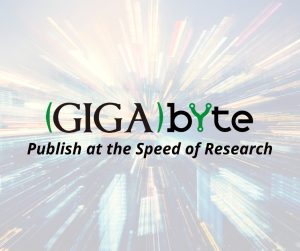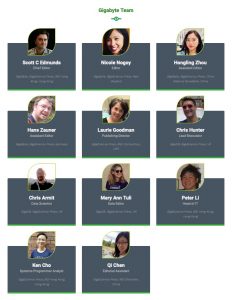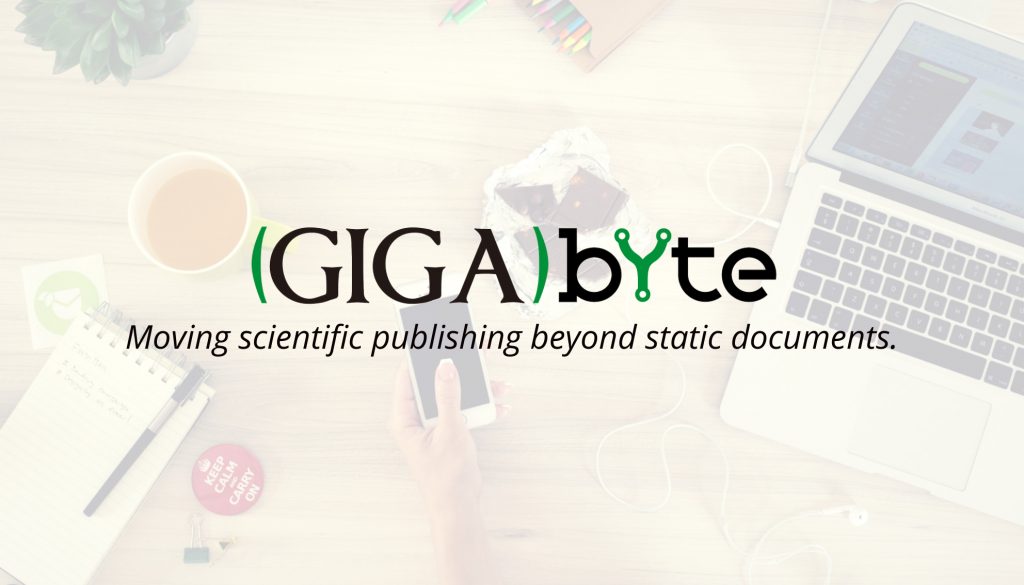Giga Gets Bigger: GigaByte kickstarts GigaScience Press
 GigaScience has spawned a new smaller and more agile sibling: GigaByte, and is the first journal to come from our new GigaScience Press. This bigger and better GigaScience family has lead to some changes in GigaScience, and we are pleased to make some important announcements about the team.
GigaScience has spawned a new smaller and more agile sibling: GigaByte, and is the first journal to come from our new GigaScience Press. This bigger and better GigaScience family has lead to some changes in GigaScience, and we are pleased to make some important announcements about the team.
Coming shortly after our 8th birthday, GigaScience Press and River Valley Technologies are proud to announce the launch of our new journal GigaByte: an online open-access, open data journal that allows rapid publication using new custom-built, end-to-end publishing technology. This shake-up of our tech platform enables accepted manuscripts to be converted to an online and PDF-ready article within a day. The editorial side also adds speed by focusing on publishing short-format data and software centric articles, which greatly reduces researcher writing time, and a questionnaire-style review process to speed peer review. The published articles go beyond providing only a stagnant PDF: the online articles incorporate dynamic features that allow readers to directly interact with the research being presented— turning it into a living document.
Taken together, GigaByte is designed specifically for publishing work done in rapidly changing research that is well-served by available embedded content. GigaByte provides exactly what is needed to release findings, data, and methods crucial to tackle urgent challenges. A perfect example for this is research on the COVID-19 crisis, where constant updates of the latest data and methodological approaches are urgently needed, while providing a balance with peer review and transparency to combat the “infodemic” (see our recent post and paper on the skewed research trends of coronavirus research that lowering the friction of communication and sharing should help improve).
The editorial office is now actively seeking submission of original research for the first two article types: Data Release and Technical Release articles, which focus, respectively on datasets and software/computational workflow papers. Assessment will focus on whether the data and tools are of general use in broad or specialist communities, that the work is scientifically sound, and that all associated Research Objects (raw and analysed data, software, source code, etc.) are open, accessible, and follow our usual best (FAIR) practices for sharing.
The launch of the GigaByte website (gigabytejournal.com) includes an editorial and two examples of articles presenting the type of work the journal looks to publish. The first article is the genome sequence of the banjo frog, and you can see a video abstract from the first author Qiye Li.
This work is part of the Genome10K community of scientists, which have been working to sequence and release the genomes of 10,000 species across the vertebrate tree of life. This type of paper is perfect for the research groups that work on individual projects within large consortia as they rarely receive the appropriate credit for the work they’ve done. This is due to the desire by the consortium to write an extensive complex paper that has a focus on the overall findings, rather than the many individual contributions. For the community at large, this also means that the data from each individual dataset and sub-project is held back until a main paper is published and is not presented in the detail needed when describing complicated endeavours.
Dr. Guojie Zhang, the lead PI, of the Banjo Frog genome article says, “For the genomic research field, most journals value more on the ultimate output of the assembled genomes and only consider reference genomes that meet certain quality metrics. I think the new journal opens the opportunity for data at various quality metrics, as they will still be useful for different applications. GigaByte provides a platform for consortiums to share the data timely and acknowledge the data generation group.”
The second article showcased in the launch of the GigaByte website presents digitised and enlarged museum specimens that were 3D printed for interactive exhibits at the National Museum in Bloemfontein, South Africa.
In describing the data and re-use potential, the digitised versions of these interactive museum exhibits are equally interactive for GigaByte readers. The articles include an embedded sketchfab window (see our first efforts with these) that allow the reader to inspect the model and interact with it through their browser. There are also links that allow readers to download and 3D print their own versions.
Lead author Anton du Plessis says of the publishing concept: “The main hurdle to sharing this data is the sheer size. I publish many papers but seldom can share the CT data with it. With GigaByte we will be able to share much more.”
(Dawning of a) New Era
 The launch of GigaScience Press has led to a shake up in how the GigaScience team is structured, with our Editor in Chief Laurie Goodman taking up the reins as our new Publishing Director. Our Executive Editor running the journal since launch, Scott Edmunds takes over as Editor in Chief of GigaScience and Chief Editor of GigaByte. With Nicole Nogoy becoming Executive Editor, Hans Zauner Editor, and Hongling Zhou Assistant Editor. We welcome some new additions to the GigaScience Press Technical Team, with Ken Cho joining us as Systems Programmer Analyst, and Rija Ménagé becoming a full time Senior Software Engineer, all under the supervision of Head of IT Peter Li.
The launch of GigaScience Press has led to a shake up in how the GigaScience team is structured, with our Editor in Chief Laurie Goodman taking up the reins as our new Publishing Director. Our Executive Editor running the journal since launch, Scott Edmunds takes over as Editor in Chief of GigaScience and Chief Editor of GigaByte. With Nicole Nogoy becoming Executive Editor, Hans Zauner Editor, and Hongling Zhou Assistant Editor. We welcome some new additions to the GigaScience Press Technical Team, with Ken Cho joining us as Systems Programmer Analyst, and Rija Ménagé becoming a full time Senior Software Engineer, all under the supervision of Head of IT Peter Li.
We’ve recruited an all new Editorial and Advisory Board for the journal, spanning a broad scope as well as geography. We’d like to welcome them to the GigaScience family and thank them and our first authors for their confidence in us. We’d also like to thank River Valley Technologies for building such a game changing platform that finally allows us to do things we’ve been wanting to do since this project started nearly a decade ago.
The GigaByte Editors encourage potential authors to contact them at editorial@gigabytejournal.com to discuss specific needs in your research communities for promoting large-data access, sharing, use, reuse, and reader interaction that GigaByte can provide. Submit now to take advantage of free Article Processing Charges until early-2021.
Manuscripts can be submitted at https://gigabytejournal.com
